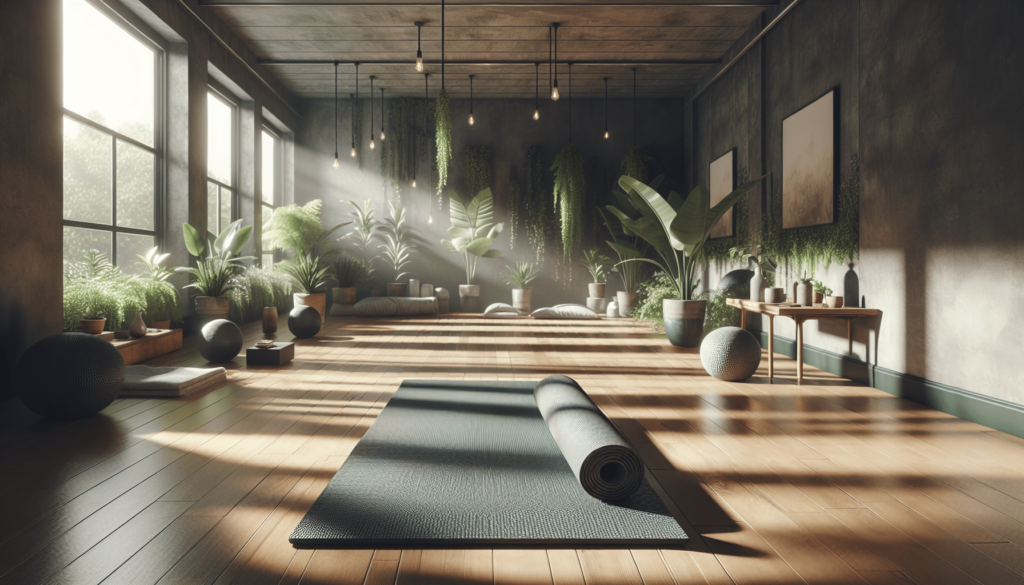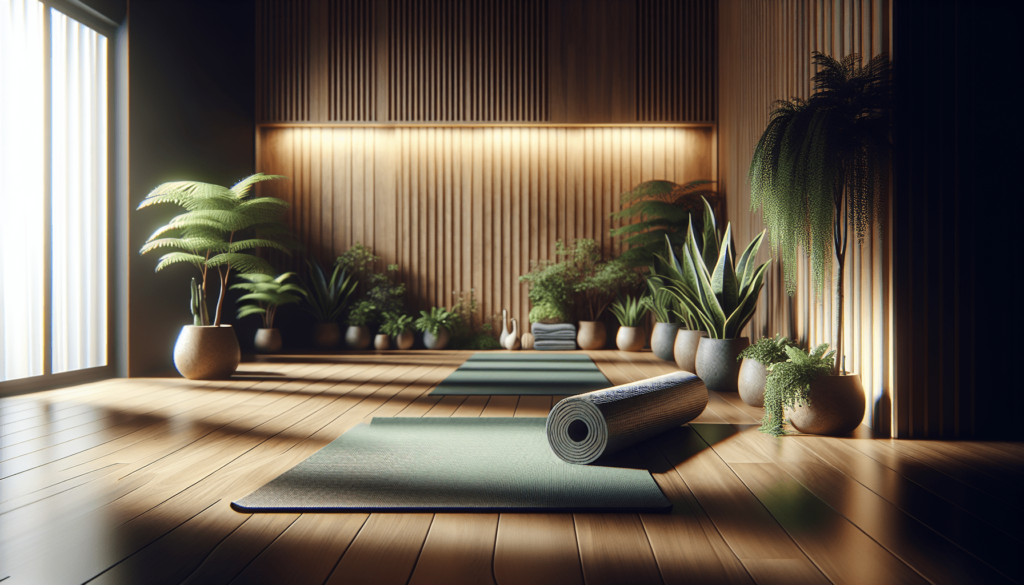Do you wake up every morning feeling like the Tin Man from “The Wizard of Oz,” in desperate need of an oil can? Or perhaps you find yourself envying your cat, who manages to stretch its way through life with an elegance that makes yoga instructors weep into their incense sticks. Either way, if you’re looking to improve your flexibility and move with the grace of someone’s cat or at least a less rusty version of yourself, then you’ve come to the right place.
Prepare yourself for an adventure in bending, twisting, and possibly looking a bit silly—all in the name of effective mobility drills. It’s time to set aside your excuses and discover how you can finally reach those unreachable parts of your body—like that spot on your back that itches whenever you’re stuck in a crowded elevator.

Understanding the Importance of Flexibility
Flexibility should be at the top of your list, right alongside drinking water and pretending to like kale smoothies. It’s not just for gymnasts or those annoyingly bendy people at the gym who always seem to be tying themselves into pretzels. It’s crucial for everyone.
Why Bother with Flexibility?
So why should you bother getting flexible? Well, it’s not just to impress your friends by touching your toes without bending your knees. Flexibility benefits extend far beyond party tricks. It enhances your overall physical performance, reduces your risk of injuries (because, let’s face it, we’re not getting any younger), and boosts your blood circulation—not to mention it can save you from those embarrassing moments when you try to pick up something from the floor and end up needing a crane to get back up.
How Flexibility Affects Aging
Ah, aging—a delightful process that brings with it wisdom, life experiences, and an increasing number of groans when you stand up too quickly. Flexibility is crucial as you age because it helps maintain your range of motion and balance, which is ideal unless you enjoy treating every trip to the supermarket as an episode of “Survivor.”
Preparing for Your Stretching Adventures
Before starting your stretching escapades, it’s best to prepare your body and mind. Think of it like deciding to swim with dolphins but then realizing you’re more prepared for swimming with rubber ducks.
Warming Up Properly
If you think warming up is just for those serious-looking athletes who strut around wearing lycra, think again. Warming up properly increases blood flow to your muscles, prepares your body for exercise, and decreases the risk of injury—because nothing spoils the mood faster than pulling a muscle while pretending to be a cat.
Dress Code for Flexibility Enthusiasts
Do not—I repeat, do not—attempt these drills in your jeans or formal office wear unless you enjoy the sound of fabric tearing. Opt for comfortable, stretchy clothing that allows you freedom of movement. You’re supposed to stretch, not stage a fashion rebellion.
Key Mobility Drills to Boost Flexibility
Finally, the part you’ve been eagerly waiting for—like a kid about to open presents on a birthday, except your present is an increased range of motion.
The Cat-Cow Stretch
Perfect for anyone who hasn’t quite mastered their animal transformations, the Cat-Cow stretch is a staple in any flexibility routine.
- How-To: Start on all fours, arch your back (like those cats you envy so much), then dip it while lifting your head and tailbone. Repeat slowly.
- Benefits: Loosens your back and neck, improves posture, and offers a momentary illusion that you might just have the grace of a feline.
The Mighty Butterfly Stretch
You might not fly like a butterfly after this, but at least your hips will thank you.
- How-To: Sit, and bring the soles of your feet together. Pull your feet towards you, and try not to cry as you push your knees toward the floor.
- Benefits: Opens up your hips and gives you the optimistic notion that one day you’ll be as flexible as that yoga instructor who keeps mentioning chakras.
Foam Rolling Fun
Introducing foam rollers: the closest thing to having your muscles massaged by a piece of cylindrical heaven.
- How-To: Use a foam roller under the large muscle groups. Roll slowly, letting the gentle pressure release the tension.
- Benefits: Aids in muscle recovery, improves circulation, and is perfect for an evening of self-care. Plus, it’s far more affordable than a spa day.
The Glorious Lizard Pose
For the times when you feel like lounging like a lizard basking in the sun.
- How-To: From a plank position, bring one foot outside your hand. Lower your hips without losing your dignity.
- Benefits: Opens up your hips, stretches your hamstrings, and potentially makes you look like you know what you’re doing.
Creating a Routine You’ll Actually Stick With
Look, I get it. Consistency is tough. Just like trying not to giggle in yoga class when your stomach makes noises straight out of Jurassic Park. But creating a routine and sticking to it is key.
Establishing Your Personal Flexibility Calendar
No need to pencil it in like it’s a court date. Just set realistic goals, like doing a few drills every other day—enough to keep your body guessing, but not enough to send you into early retirement.
Incorporating Flexibility into Daily Activities
Stuck waiting for the kettle to boil? Perfect time for a quick hamstring stretch. Watching TV? Try some seated stretches—no one’s judging here, except maybe your cat, because even they can’t resist.

The Role of Nutrition in Flexibility
What’s this? Nutrition affects flexibility too? You bet it does, just like the way your morning coffee affects your entire personality for the day.
Foods That Help or Hinder Flexibility
Eat your greens, as they help keep your muscles pliable. On the other hand, overindulgence in foods that make you slow and sluggish can sabotage your flexibility faster than you can say, “extra cheese.”
Hydration is Key
Even your muscles need to hydrate, so drink that water. Consider yourself as a houseplant—you need sun, water, and the occasional pep talk.
Debunking Flexibility Myths
There are more myths about flexibility than there are about the Loch Ness Monster, but here’s a hint: one might be scaly, but the other is all about getting bendy.
Myth: Flexibility is Only for the Young
Ah, youth—when everything but your wit was supple. But flexibility isn’t reserved for the sprightly; it’s for anyone who doesn’t want to make groaning sounds for the rest of eternity. Remember, even trees bend in the wind, regardless of their age.
Myth: You Need to Stretch for Hours
You’re busy. There’s barely enough time to binge-watch that new series, let alone spend hours stretching. The good news? You don’t have to. Short, consistent sessions will do just fine—leave the hour-long stretches for yoga retreats and awkward dinner parties.
Conclusion: Embrace the Bendiness
In the end, becoming more flexible isn’t just about the ability to perform human origami. It’s about feeling good, moving freely, and preventing those unfortunate snap, crackle, and pop moments. It’s about channeling your inner cat, minus the furballs. So, embark on your flexibility journey, and may your days be stretchy and your laughter come easily even if your stretches don’t.
May the only time you get bent out of shape be when you’re trying a new pose, rather than stressing about the lack of bendiness in your life. Here’s to keeping the rust away one jaunty stretch session at a time!
